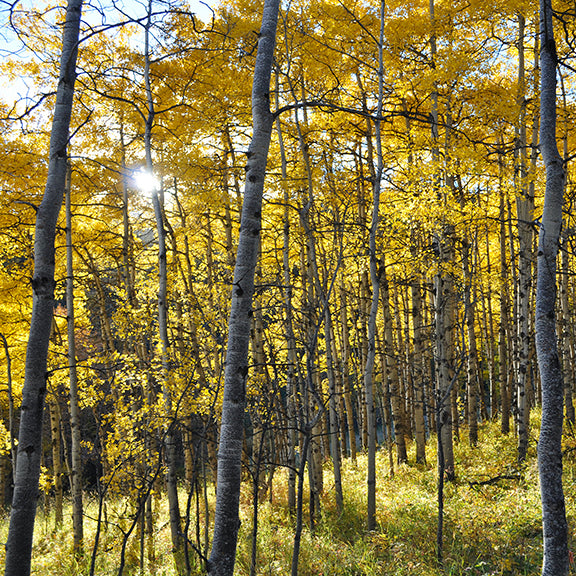Wild About Flowers
Populus tremuloides - Aspen Poplar
Populus tremuloides - Aspen Poplar
Couldn't load pickup availability
Aspen Poplar, also known as Quaking Aspen, is a fast-growing, clonal tree that grows to 50–80 feet tall and adds movement, texture, and seasonal beauty to both urban and rural landscapes. Its distinctive round, fluttering green leaves turn brilliant shades of gold in the fall, creating stunning autumn displays. In spring, it produces pollen-rich catkins that support early-season insects, while its seeds and twigs provide food for songbirds and small mammals. Its dense groves offer critical nesting sites and shelter for wildlife. The smooth, white to pale yellow bark adds winter interest, making it a striking year-round feature in the landscape.
Thriving in a wide range of soils, Aspen Poplar is a hardy native that spreads through underground roots, forming dense groves that enhance biodiversity and provide long-term habitat. Ideal for larger spaces, it plays a key role in erosion control, carbon sequestration, and soil enrichment, making it an essential species in forest regeneration and self-sustaining landscapes. While young saplings are frequently browsed, mature trees are less appealing due to their bitter-tasting bark, offering moderate resistance to deer over time.
Bloom Times & Plant Sizes
Bloom Times & Plant Sizes
Important Information - The "Bloom Period" is an indicator of the time period within which the wildflowers will bloom and does not describe the time period that a single plant will bloom. The "Sizes" listed are intended to be a general guideline to consult during plant selection. - Plant growth and bloom times will vary depending on geographical location & individual site conditions.
Edible & Medicinal Info Disclaimer
Edible & Medicinal Info Disclaimer
The Edible & Medicinal information on this site is for informational purposes only and should not be acted on without thorough research and professional guidance. We are not responsible for any adverse effects resulting from the use of or misidentification of plants.
Share

Plant Specifics
Seeds Per Pack
Seed packs are currently unavailable.
Light Conditions
- Sun
Soil Conditions
- Moist
- Well Drained
- Loam
- Sandy
- Clay
- Seasonally Moist
Height
Width
- Spreading
Bloom Colour
- Green
Month of Bloom
- May
- June
Vigorousness
- Fast
- Aggressive
Deer Resistance
- Moderate
Features
- Bees
- Birds
- Fragrant
- Fall Color
- Rural Spaces
- Medicinal Properties
- Edible Parts
Chinook Exposure
- Fully Exposed
Distribution Info
Native to North America, Aspen Poplar is the most widely distributed tree on the continent, found across all Canadian provinces and territories, with the possible exception of Nunavut and into the US. This species typically inhabits a variety of environments, including boreal forests, montane regions, and prairie parklands, often forming pure stands or mixed woodlands.
Traditional Edible & Medicinal Info
Indigenous groups used Populus tremuloides medicinally. Bark infusions were made to treat fevers, colds, and pain, while resin and inner bark were applied to wounds and skin irritations. The soft inner bark was occasionally consumed as an emergency food source.

